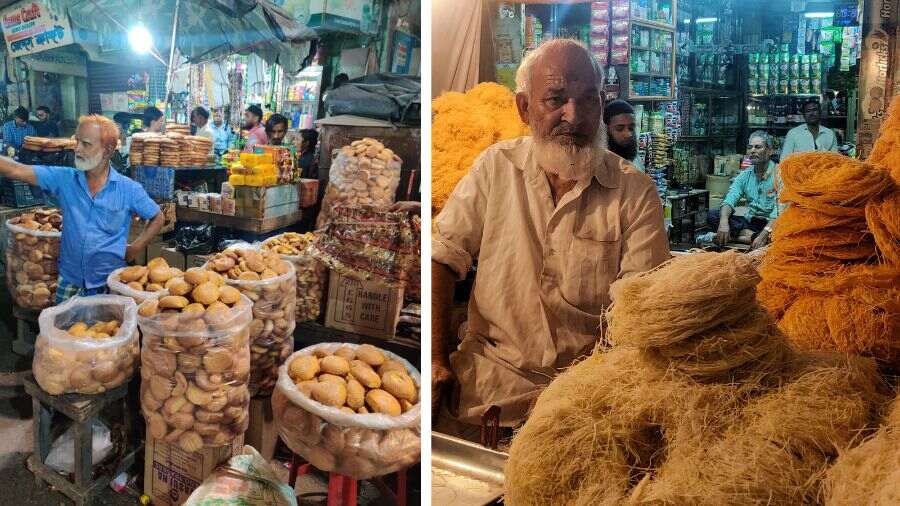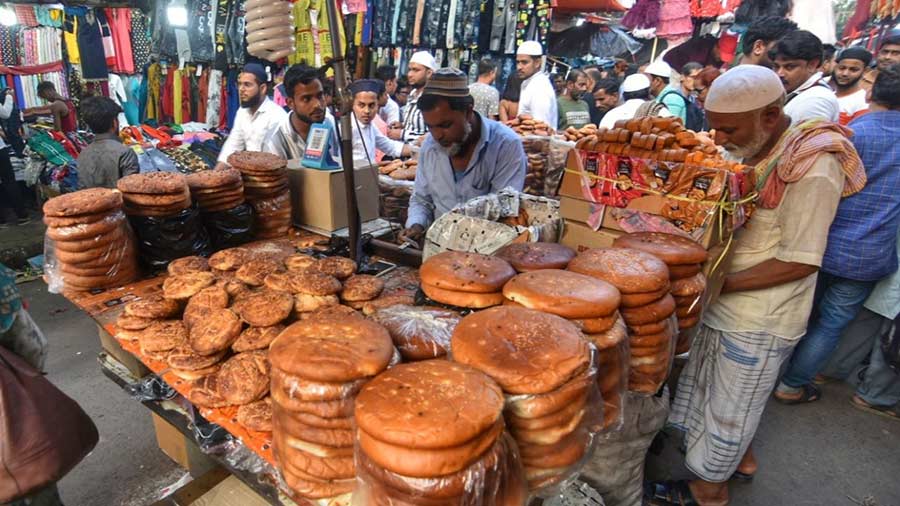Adil Waris, a young advocate, arrives on Zakaria Street before 5pm to buy traditional iftar items. People may assume his list ticks off suta kebabs from Adam’s Kebab Shop, Chicken Changezi from Taskeen and nihari from Sufia but no!
What iftar food really means for him and his family is fruit, fresh fruit juices, fritters, dahi vada, halwa puri, kala chana and samosa. “It’s surprising how a large part of breaking fast is done with vegetarian food. Traditionally, we break our fast with water and dates. Having meat or not, though, is a personal choice and can differ across regions,” says Adil.
Every region has a street with its signature dish. If Suta Kebab from Adam’s Kebab Shop is the most talked about item on Zakaria Street, in Old Dhaka’s Chawkbazar, the signature delicacy is Boro Baper Polay Khay, a mix of chickpeas, fried potatoes, minced meat, liver, lentils, flattened rice, eggs, spices and ghee. At Mumbai’s Mohammed Ali Road, it is arguably the homemade khichda, a variation of the haleem, piping hot from the deg.

L-R: Shahi tukda, halwa puri in the making, and amritti or imarti
The meat of the matter is that the meat hogs the spotlight. But for the everyday breaking of the fast during Ramzan, the food is simply put, vegetarian.
“The real iftar food on Zakaria Street is what you don’t get all year round… items like dahi wada, shahi tukda and the halwa-puri which is what I always go for,” points out chef Rahul Arora, whose father had a shop on Ezra Street.
With just a few days left for Eid, My Kolkata took a walk down Zakaria Street to get a glimpse of the actual dastarkhan for iftar.
A fruitful fast
As one walks past the little shops selling all kinds of non-vegetarian delicacies, you can’t miss the fruitsellers dotting every corner of the food hub. Bright red watermelons, melons, bananas, apples, grapes, and mangoes are commonly seen. These shops usually sell a mix of freshly cut fruit. When the shopkeepers break their roza, they sit together relishing fresh fruits.
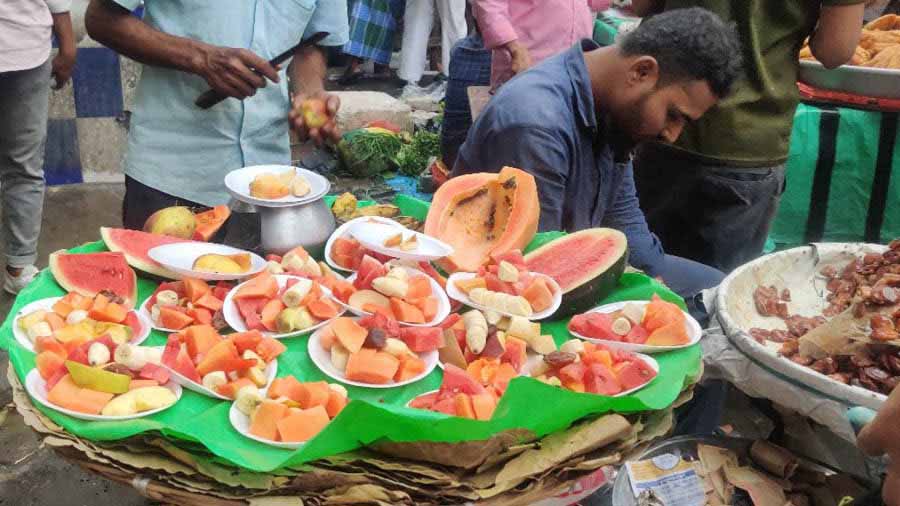
Fruit salads are among the top picks for breaking the fast and fruits with high water content are usually top draw
Fruits that have high water content like watermelon and cucumbers are a top draw. “We eat lots of fruits during iftar. Watermelons, bananas, papayas—basically whatever is available. We include fresh fruit juices and lemonade too. This gives us a boost of energy almost immediately,” says Arshi Hussain, a resident of Khidderpore.
On Zakaria Street, fresh fruits are sold at lower prices. The option of fruits available depends largely on the season Ramzan month falls in.
Fresh fruit juices, lassi, sherbets
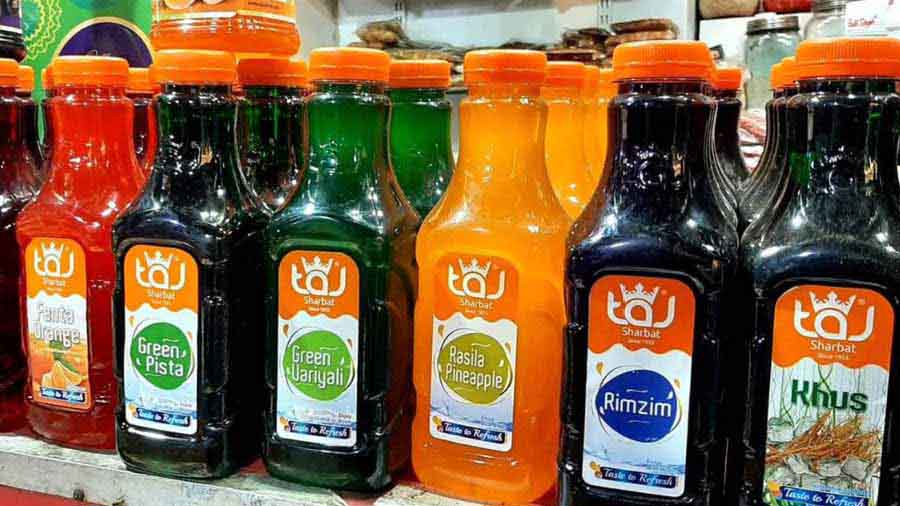
Various juices and syrups at a shop at Zakaria street
Fruit juice is also one of the most preferred iftar drinks available on Zakaria Street. Woodapple (bel) sharbat, sugarcane, watermelon and seasonal juices are popular thirst quenchers.
At the crossing of Phears Lane and Chuna Gali, there is an amazing fruit juice corner where the juice is prepared from actual fruit pulp and no syrup.

Roohafza sherbet
One will also spot plain Roohafza near Nakhoda Masjid, a tasty sip to break fast with. If you love thick and creamy lassi, then you’ll find that too, along with milkshakes. Some of the best milkshakes are served near Dilshad Laziz Kebab.
Fritters, chana ghugni and dahi vada
It is likely you have noticed the shops selling fritters on Zakaria Street because there’s one in every alley. Alu-r chop, onion pakoda, beguni and tomato chop are deep-fried and served hot in little paper thongas sprinkled with rock salt.

Dahi vada
Dahi vada is another favourite iftari dish here. But it is not the usual dahi vada found in mithai shops or roadside stalls. These dahi vadas are simple with a hint of sweetness and the curd is diluted with water to make it runny. The vadas are small besan pakodas and not big. “The curd is runny instead of rich and thick because people have this for iftar. If the curd is not diluted, it might cause acidity,” explained a seller.
Halwa-puri, shahi tukda and sweets
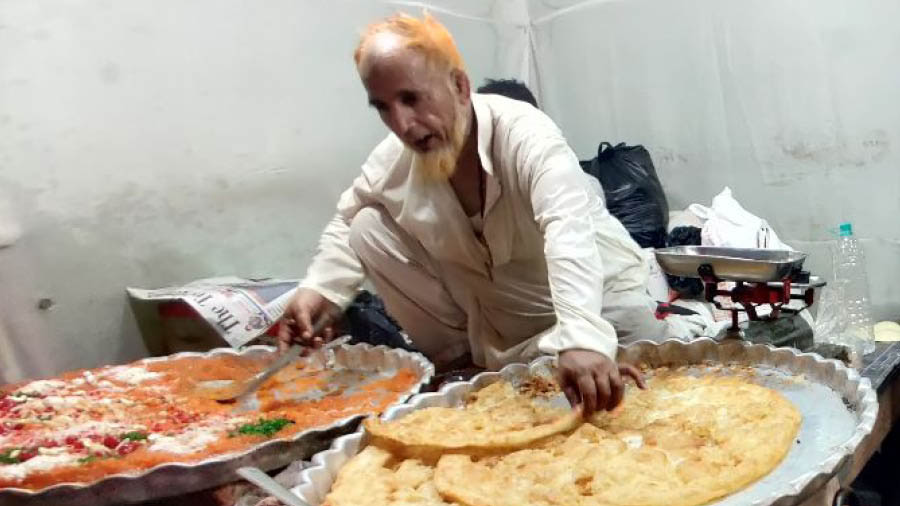
The halwa-puri on Zakara Street is known for the size of the puris
The halwa-puri on Zakaria Street is known for its massive puris deep fried in oil. The halwa is a simple sooji halwa, which is perfectly moist and sweet. The shop opposite to Dilli 6, on the same lane as Muradabadi Lazeez Kebab, is witness to many people queuing up to get their hands on a plate of hot halwa-puri. This is only available during Ramzan on Zakaria Street.
Firni, shahi tukda and falooda are also top picks for the iftar spread. While falooda at Taskeen is popular, one can try shahi tukda from a shack on your left as you pass by Nakhoda Masjid towards Chitpore. The bread is fried in pure ghee and a generous amount of malai is poured from the top with saffron "imported from Persia".
Various kinds of sweets are consumed during iftar but coin jalebis and amritis are more popular. Hot and crispy jalebis and amritis are available in any sweet shop on Zakaria Street.

Amrittis being fried
A variety of halwas, laddoos, sweets are available at Haji Allauddin Sweets. Apart from Batishi Halwa, mawa laddoo, gajar ka halwa and hot gulab jamun are also worth trying.
Dates and dry fruits
The shops opposite Haji Allauddin Sweets will definitely make one recall the shops in Delhi's Jama Masjid area. These shops have a wide range of dates—Arabic, Kimia, Ajwa. You name it and they'll have it. The community breaks the fast with a date and then the iftari begins. The quality and price of dates here are unbeatable.
A range of different dry fruits, RoohAfza, khus syrup etc are also available in these same shops. The shopkeeper claims that most of the dry fruits are imported.
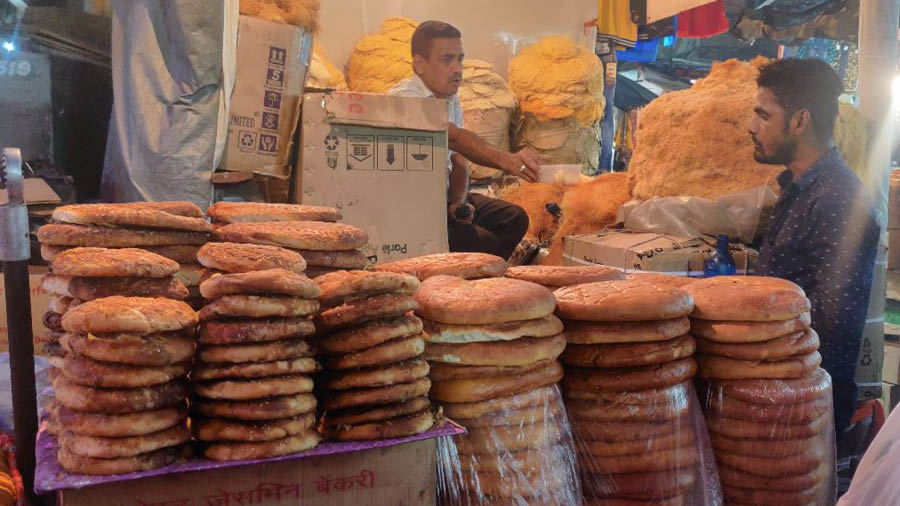
Sheermal and bakarkhani
Bakery items, lachha sewai
We can't miss out on the Sheermal and Bakarkhani. The Sheermal is soft and has a hint of sweetness while the Bakarkhani has perfect layers.
Laccha sewai in hot milk with chopped dry fruits is also a popular dish during the Ramzan month. If you are in Zakaria Street buy some laccha sewai from chacha's stall opposite Bombay Hotel.

One of the bakery items sold at Zakaria street at locally made buns
Chacha says the best way to identify a good batch of sewai is by smelling the ghee and tasting a few strands. If the sewai is fried in Dalda and not in ghee, then the Dalda will stick to the roof of your mouth.
